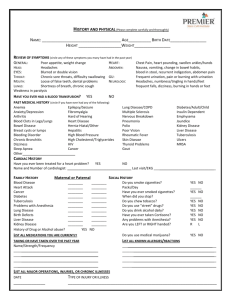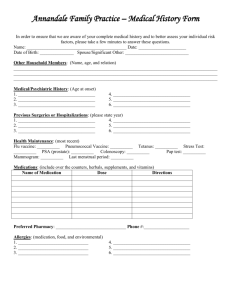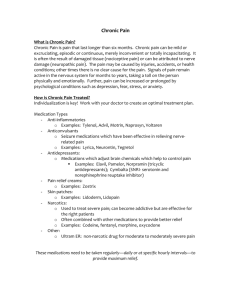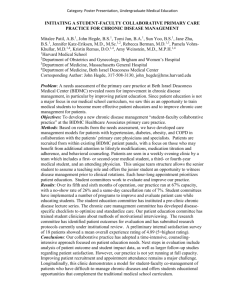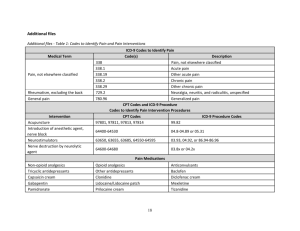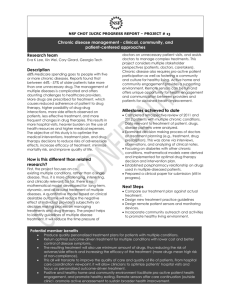Chronic Pain
advertisement
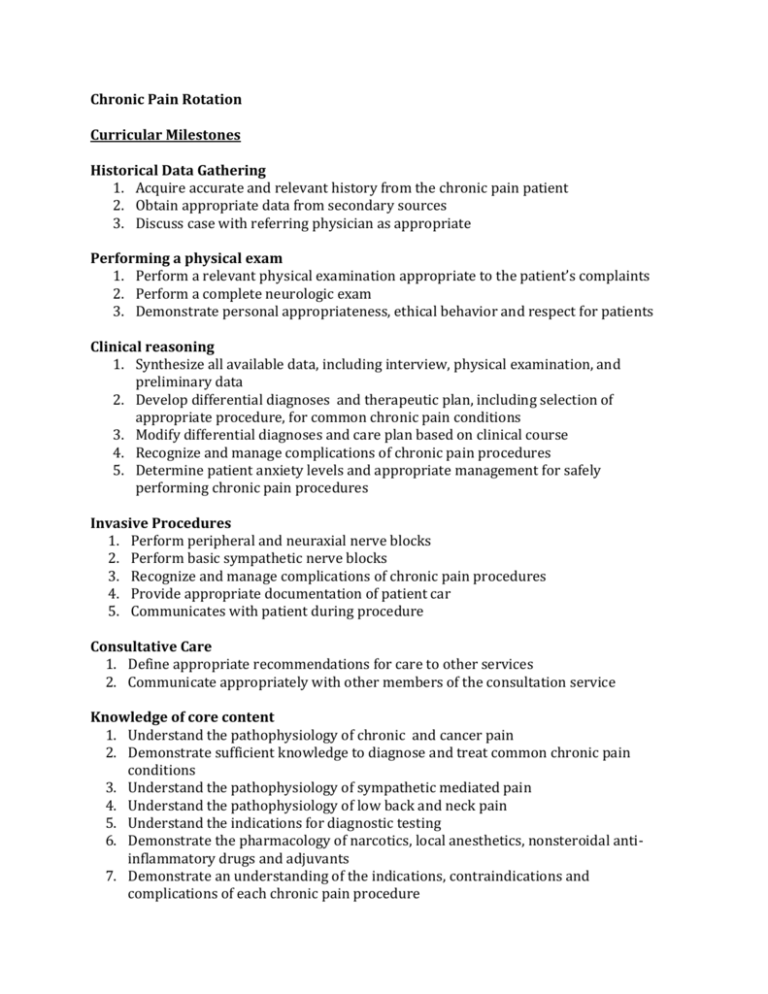
Chronic Pain Rotation Curricular Milestones Historical Data Gathering 1. Acquire accurate and relevant history from the chronic pain patient 2. Obtain appropriate data from secondary sources 3. Discuss case with referring physician as appropriate Performing a physical exam 1. Perform a relevant physical examination appropriate to the patient’s complaints 2. Perform a complete neurologic exam 3. Demonstrate personal appropriateness, ethical behavior and respect for patients Clinical reasoning 1. Synthesize all available data, including interview, physical examination, and preliminary data 2. Develop differential diagnoses and therapeutic plan, including selection of appropriate procedure, for common chronic pain conditions 3. Modify differential diagnoses and care plan based on clinical course 4. Recognize and manage complications of chronic pain procedures 5. Determine patient anxiety levels and appropriate management for safely performing chronic pain procedures Invasive Procedures 1. Perform peripheral and neuraxial nerve blocks 2. Perform basic sympathetic nerve blocks 3. Recognize and manage complications of chronic pain procedures 4. Provide appropriate documentation of patient car 5. Communicates with patient during procedure Consultative Care 1. Define appropriate recommendations for care to other services 2. Communicate appropriately with other members of the consultation service Knowledge of core content 1. Understand the pathophysiology of chronic and cancer pain 2. Demonstrate sufficient knowledge to diagnose and treat common chronic pain conditions 3. Understand the pathophysiology of sympathetic mediated pain 4. Understand the pathophysiology of low back and neck pain 5. Understand the indications for diagnostic testing 6. Demonstrate the pharmacology of narcotics, local anesthetics, nonsteroidal antiinflammatory drugs and adjuvants 7. Demonstrate an understanding of the indications, contraindications and complications of each chronic pain procedure



